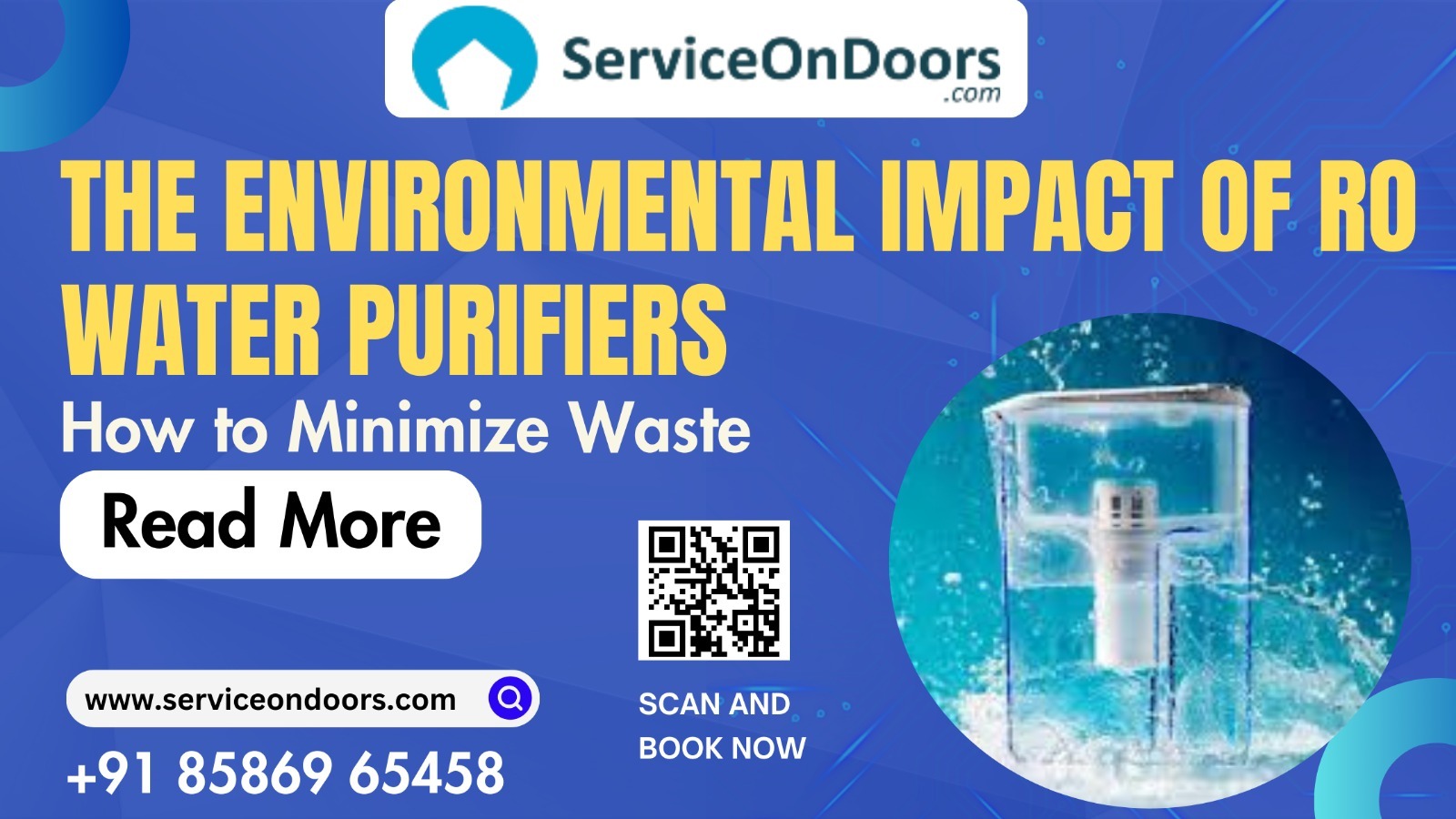Introduction
Reverse Osmosis (RO) water purifiers have become a household necessity in many regions, offering safe drinking water by removing contaminants, dissolved solids, and impurities. However, while these purifiers are effective, their environmental impact can be significant, especially in terms of water wastage and energy consumption. In this blog, we’ll explore how RO systems affect the environment and ways to minimize their negative impact.
1. Understanding the Environmental Impact of RO Water Purifiers
RO water purifiers operate by forcing water through a semi-permeable membrane to remove contaminants. While this process ensures clean and safe drinking water, it also results in water wastage, a problem often overlooked by consumers.
- Water Wastage: The biggest environmental concern with RO purifiers is the amount of water they waste during filtration. On average, for every liter of purified water produced, an RO system can waste up to 3-4 liters. This brine water, often full of salts and impurities, is discharged directly into drains, leading to water wastage—a critical issue in areas already facing water shortages.
- Energy Consumption: RO purifiers require energy to function, especially in systems equipped with pumps to improve water pressure. Higher energy consumption contributes to your household’s carbon footprint, especially if the energy source is non-renewable.
- Plastic Waste: Many RO systems come with replaceable filters and cartridges, most of which are made of plastic. Replacing these filters regularly, while necessary, adds to the growing problem of plastic pollution, especially if these components aren’t recycled properly.
2. How to Minimize Waste and Reduce Environmental Impact
While the issues are real, there are several ways to mitigate the environmental impact of RO purifiers without compromising on water quality.
a. Use RO Systems Wisely
One of the simplest ways to reduce waste is to limit the use of RO purifiers to water that genuinely requires purification. Not all water used in a household needs to be purified through an RO system. For example, water used for washing or cleaning doesn’t require purification, so you can limit RO use to drinking and cooking purposes.
b. Recycle Reject Water
The water rejected by RO systems, commonly referred to as "wastewater" or "brine water," can be repurposed for several household tasks. Some ways to recycle this water include:
- Gardening: While brine water is high in salts, it can be diluted and used for plants that are salt-tolerant.
- Cleaning: Use the rejected water for mopping floors or cleaning bathrooms, as its high salt content can act as a disinfectant.
- Flushing Toilets: Collecting reject water for flushing toilets can help conserve fresh water.
c. Choose a High-Efficiency RO System
Not all RO systems are the same in terms of efficiency. Opt for modern, high-efficiency RO purifiers that are designed to reduce water wastage. Some advanced models come with a recovery rate of up to 50%, meaning they waste less water than traditional systems.
d. Regular Maintenance and Filter Replacement
Ensuring that your RO system is properly maintained can significantly reduce wastage. Clogged filters or poorly functioning membranes can increase water wastage, as the system will reject more water during the purification process. By replacing filters and membranes on time, you can keep the system running efficiently.
e. Optimize Water Pressure
Most RO purifiers work best at specific water pressures. If the water pressure in your home is too low, the system will reject more water, leading to higher wastage. Installing a pressure booster pump can ensure that the system operates at optimal pressure levels, minimizing water loss.
f. Consider Alternative Water Purification Methods
If your water supply isn’t heavily contaminated with dissolved solids, you might not need an RO purifier. In such cases, alternative water purification methods, such as UV (ultraviolet) or UF (ultrafiltration) systems, might be a better choice. These methods produce no water waste and are energy-efficient, making them a more sustainable option.
3. Looking at the Bigger Picture: Reducing RO’s Overall Footprint
It’s important to acknowledge that, while individual efforts to reduce the environmental impact of RO purifiers are crucial, larger systemic changes are also needed. For example:
- Government Regulations: Some regions are considering regulations that limit the amount of water that RO purifiers are allowed to waste. By mandating higher efficiency standards for RO systems, governments can help conserve water at a larger scale.
- Recycling RO Filters: Encouraging manufacturers to design recyclable filters and components can help reduce plastic waste. Consumers can also play a role by choosing brands that offer eco-friendly options for filter disposal or recycling programs.
- Public Awareness: Increasing public awareness about the environmental impact of RO purifiers and educating consumers on how to minimize waste will go a long way in promoting sustainable water purification practices.
Contact Us:
Get in touch with ServiceOnDoors today to keep your RO water purifier running at its best! Call us at +91 85869 65458, visit our website serviceondoors.com, or simply scan the QR code for easy booking. Our expert technicians ensure that your purifier delivers fresh, clean water by providing efficient and reliable maintenance services. Trust ServiceOnDoors for professional, hassle-free RO servicing to maintain water quality for your home.
